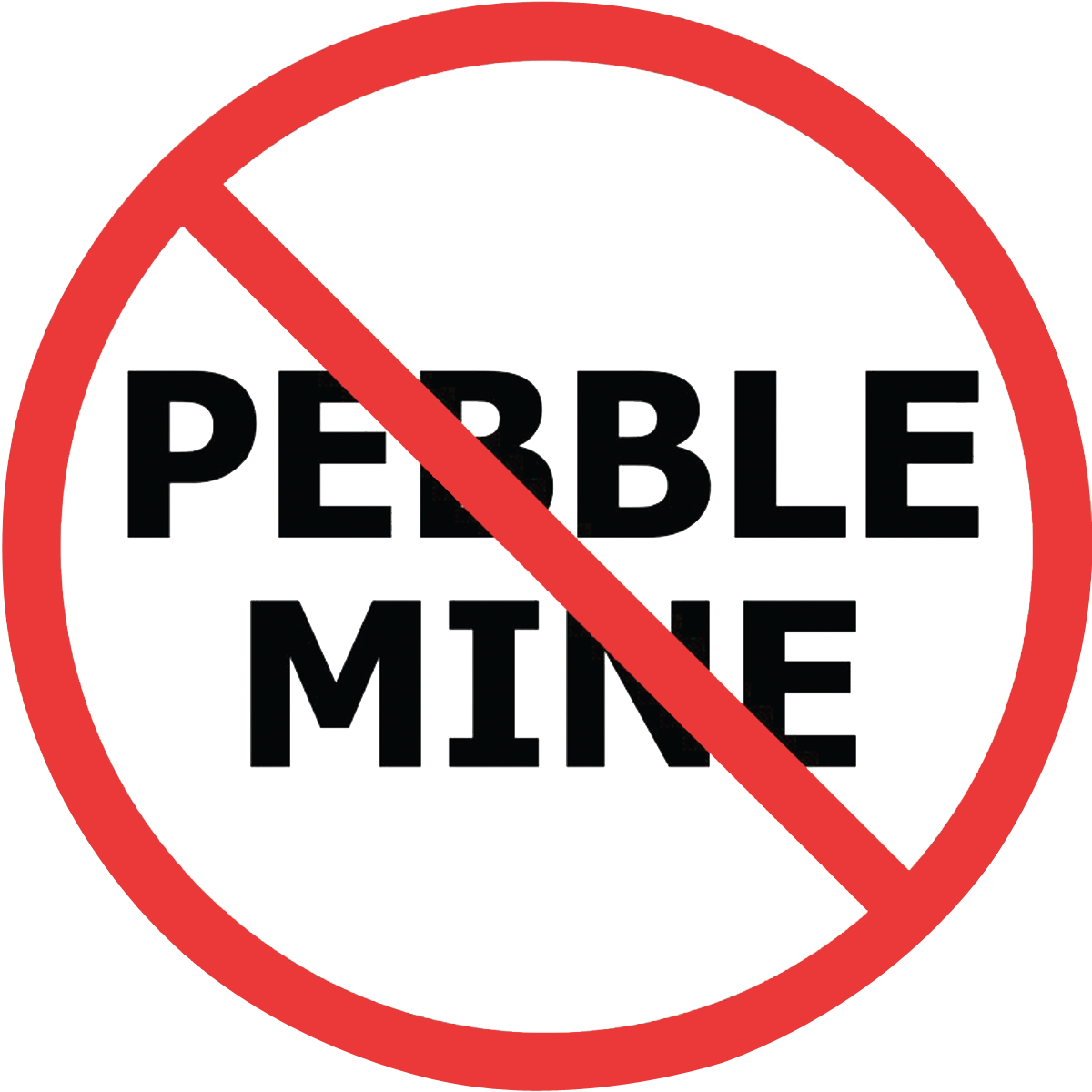By: Molly Welker
There are many aspects to be concerned about when it comes to the proposed Pebble mine. Because Bristol Bay’s world-class salmon fisheries are so important to the region, the State of Alaska, and for the global supply of salmon, many of the concerns are related to water and the potential water quality contamination that the mine will generate.
Bristol Bay’s water quality and quantity are the economic and cultural backbone of the region. Meanwhile, researchers are learning more and more about the importance of a diversity of intact headwaters streams, which together sustain the strong salmon runs for which Bristol Bay is known.
Pebble’s massive proposal has the potential to contribute toxic materials (from metal leaching and acid rock drainage) that will need to be stored in an open pit and tailings storage facility forever. Pyritic tailings* and potential acid-generating waste** rock will be backfilled into the open pit during the first 15 years of the mine’s closure period.
*Pyritic tailings are finely ground rock particles containing the mineral pyrite. The tailings are the by-products left over from the milling process that extracts the valuable gold, copper, and molybednum from the ore that will be mined at Pebble.
**Acid Generating Waste is rock that had to be removed from the surface prior to the rock that is sent to the milling plant, which separates the ore from the tailings. Because the waste rock sits just above the ore body it has the potential of containing pyrite and producing acid mine drainage.
The sulfides in the tailings will react with oxygen and water to create sulfuric acid, which leaches other harmful metals from the surrounding rock, creating a toxic “soup” called acid mine drainage. Mines with acid drainage generally require on-site treatment in perpetuity.
“In perpetuity” is defined as water pollution that will continue for hundreds or thousands of years, or for which government agencies can’t predict a point at which water quality standards will be met without treatment.
And seepage and leachate monitoring and collection systems, as well as the water treatment plants at Pebble, might need to be maintained for hundreds to thousands of years.
All the pyritic tailings generated at the Pebble Mine will be backhauled to the open pit for permanent underwater storage when the mine closes. Parameters in the pit lake that are predicted to exceed water quality discharge limits include hardness (i.e., the measure of dissolved calcium and magnesium in water) and several trace elements, including aluminum, zinc, copper, and more, meaning they will have to pump and treat the pit lake water for all these parameters that exceed water quality standards into perpetuity prior to discharging it. ***
Pebble estimates that its water treatment plants will need to treat 1.8 – 10.6 billion gallons of waste water per year. This is an unprecedented volume of wastewater to treat, and we know of no other operating U.S. mines that treat such a large volume.
In a 2012 review of fourteen currently operating U.S. copper mines that account for 89% of U.S. copper production, 92% failed to capture and treat mine seepage, resulting in significant water quality impacts.****
Equally alarming is the fact that Pebble’s mine pit containing over 61 billion gallons of water at closure will persist forever. This mine pit, or pit lake, will contain polluted water caused by acid mine drainage that presents a permanent hazard to the world’s largest wild salmon fishery and local wildlife.
Berkeley Pit in Butte, Montana. This is significantly smaller than the tailings pond proposed at Pebble and would sit at the headwaters of Bristol Bay in perpetuity.
The cost of water treatment at mines is considerable, and is shouldered by the American taxpayer if the mining company is unable or unwilling to pay to clean up the toxic mess. The long-term public liability is enormous: taxpayers are expected to pay for centuries of water treatment – long beyond the expected life of any mining corporation. No mine that requires water treatment in perpetuity should be permitted.
In 2014, the EPA completed and released the Bristol Bay Watershed Assessment (BBWA), a scientific study of the potential impacts to the Bristol Bay wild salmon fishery of developing the Pebble deposit. The study outlined severe and lasting impacts to Bristol Bay salmon from the mine footprint alone, including the likely direct loss of 55-87 miles of streams used for spawning and rearing habitat for salmon and 2,500-4,000 acres of wetlands which provide additional salmon habit. (In the first phase, Pebble proposes direct effects to 30.8 miles of salmon streams and over 3,000 acres of wetlands and has indicated intentions to expand.)
Northern Dynasty has proposed this preposterous plan to build a massive open pit copper and gold mine in the headwaters of the greatest wild salmon fishery on Earth. The project is a disaster in the making for Bristol Bay, its people, and its wildlife. The Pebble Mine is a reckless project, overwhelmingly opposed by the people who live there – and one the world cannot afford.
Molly Welker is an environmental scientist working with SalmonState to protect salmon habitat and promote policies that will guarantee Alaska remains the Salmon State.
*** Ref. Lorax Environmental Services Tech Memo – Pebble Project Pit Lake- Water Quality Predictions submitted to PLP Oct 31, 2018
****Ref. Polluting the Future: How Mining Companies are Contaminating our Nation’s Waters in Perpetuity, Earthworks, May 2013


